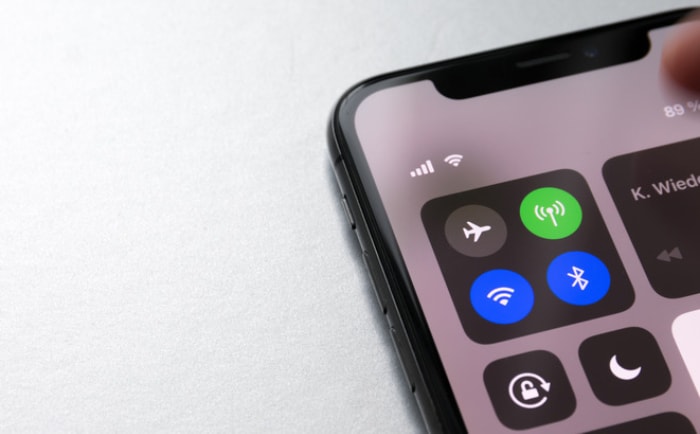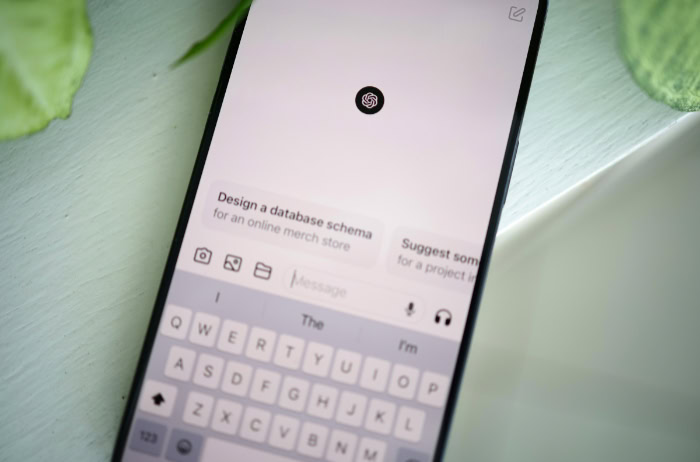E-Reader vs. Tablet: How to Pick the Right One
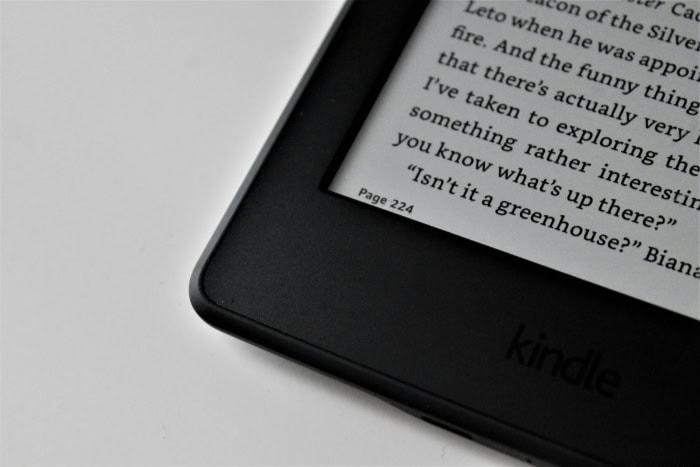
Reading technology has transformed dramatically, giving us choices our parents never had. Between the minimalist e-reader and the versatile tablet lies a decision that affects everything from your reading comfort to your wallet.
Hardcore bookworms and casual page-flippers approach this choice differently. Some seek a device purely for losing themselves in novels, while others need something that handles work documents Monday morning and Netflix binges Friday night.
Your eyes, budget, and lifestyle all factor into this decision. Can you justify a specialized reading device, or do you need something that pulls double-duty for productivity?
Primary Use Cases and Target Users
Device preferences often boil down to how you plan to use your technology day-to-day. Reading habits and lifestyle needs typically direct people toward either dedicated e-readers or multipurpose tablets.
Specialized Reading vs. Multitasking
E-readers excel at one thing: delivering an exceptional reading experience. Their singular focus makes them perfect companions for avid fiction readers who regularly consume novels, autobiographies, and literary works.
The distraction-free environment helps maintain focus during lengthy reading sessions, allowing readers to immerse themselves fully in the text without notifications or other apps competing for attention.
Tablets, however, serve as digital Swiss Army knives. A tablet shifts seamlessly from displaying your current book to handling work emails, streaming videos, playing games, or editing documents.
For people who read intermittently or need to switch between different tasks throughout the day, tablets provide versatility that justifies their higher price tag. Many users appreciate being able to jump from reading a cookbook to watching an instructional video without changing devices.
User Profiles
Heavy readers generally gravitate toward e-readers. People who consume multiple books monthly find the paper-like display, extended battery life, and lightweight design essential for marathon reading sessions.
Book enthusiasts who prioritize the reading experience above all else rarely regret investing in a dedicated device.
Casual readers who only occasionally open a book might find a tablet more practical. The additional functionality justifies the expense for someone who reads sporadically but uses other applications frequently.
Students represent a unique category with mixed needs. While e-readers work well for literature courses requiring extensive reading, tablets prove invaluable for textbooks with diagrams, interactive elements, note-taking capabilities, and research tools.
Many students ultimately choose tablets for their academic versatility despite the higher price.
Professionals who read primarily for work purposes often prefer tablets for annotating documents, highlighting text, and integrating with productivity software. The ability to edit, share, and collaborate directly from the same device often outweighs the reading comfort advantages of e-readers.
Travelers present another distinct user group. Those traveling primarily for pleasure might prefer an e-reader's extended battery life and excellent outdoor readability.
Business travelers typically opt for tablets that can handle both leisure reading and work demands while on the road.
Display Technology and Hardware Comparison

The physical differences between e-readers and tablets extend far beyond their outward appearance. Their internal components and display technologies fundamentally alter how you interact with content and how long you can use the device between charges.
Screen Types
E-ink displays found in dedicated e-readers mimic the appearance of actual paper remarkably well. Unlike traditional screens, e-ink reflects ambient light rather than emitting its own, creating a matte, non-glossy surface that remains visible even in bright sunlight.
The technology works by arranging thousands of tiny black and white particles that physically move to form text and images when an electrical charge is applied.
Most modern e-readers now include adjustable front lighting for nighttime reading, but unlike tablets, the light shines onto the page rather than directly into your eyes. The result feels much more like reading a physical book with a small lamp.
E-ink displays also maintain static images without consuming power, only using electricity when turning pages.
LCD and LED screens in tablets operate fundamentally differently. They actively emit light, producing vibrant colors and smooth motion ideal for videos, games, and photo viewing.
The technology excels at rendering detailed images, complex graphics, and vivid illustrations that often appear washed out or grayscale on e-ink displays.
Tablet screens refresh much faster than e-ink, eliminating the brief flash or ghosting effect sometimes noticeable when turning pages on an e-reader. However, the trade-off comes in the form of glare, particularly in outdoor settings where reflections can make reading difficult.
Battery Life and Portability
E-readers offer dramatically superior battery performance compared to tablets. A single charge typically powers an e-reader through weeks of regular reading, with many models providing 20-30 hours of actual active reading time before needing a recharge.
The minimal power requirements stem from the e-ink technology that only consumes electricity during page turns, not while displaying static text.
Weight differences also favor e-readers significantly. Most popular models weigh between 6-7 ounces, comparable to a small paperback book.
The lightweight design allows for comfortable one-handed reading for extended periods without fatigue. Many e-readers maintain slim profiles under 0.4 inches thick, making them ideal for slipping into a coat pocket or small bag.
Tablets demand much more frequent charging, typically requiring a power source daily with active use. Battery performance varies widely among models but generally ranges from 8-12 hours of mixed activity before needing a recharge.
Running demanding applications like games or video streaming depletes the battery even faster.
The additional components required for a tablet's expanded functionality also add considerable weight. Most mainstream tablets weigh between 10-16 ounces, with larger models exceeding a pound.
While still portable, the additional heft becomes noticeable during extended reading sessions, often necessitating two-handed use or a supporting surface.
Health, Comfort, and Long-Term Use
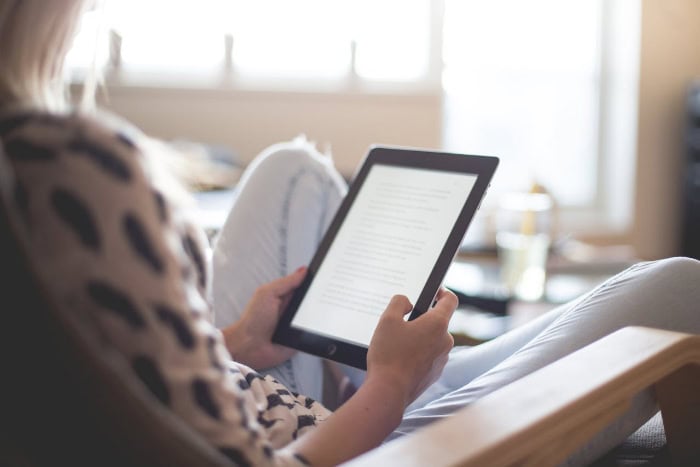
Physical comfort during reading sessions becomes increasingly important as minutes turn to hours. For avid readers who regularly spend significant time with their devices, the health implications and ergonomic considerations can dramatically affect the overall experience.
Eye Strain and Fatigue
E-readers offer substantial advantages for eye comfort during extended reading. The e-ink display technology mimics paper by reflecting ambient light rather than projecting light directly toward your eyes.
The absence of screen flicker and reduced glare creates a more natural reading experience that many users find gentler on their vision.
Most e-readers emit minimal blue light compared to tablets and smartphones, potentially helping maintain normal sleep patterns for those who read before bed. While many modern e-readers include lighting options for reading in dark environments, the front-lighting systems direct illumination toward the page rather than outward toward your eyes.
Tablets present more challenges for extended viewing. The backlit screens emit light directly into your eyes, potentially contributing to digital eye strain after prolonged use.
The higher refresh rates and brighter displays that make tablets excellent for video can become taxing during hours of reading static text.
Many tablet users employ night modes or blue light filters to mitigate potential discomfort, but these software solutions only partially address the fundamental differences in display technology. Reading for several hours on a tablet often requires more frequent breaks than equivalent time spent with an e-reader or physical book.
Ergonomics
E-readers excel in physical comfort during lengthy reading sessions. Most e-reader models weigh less than half a pound, similar to a small paperback book, enabling comfortable one-handed operation.
The slim profile and balanced weight distribution allow readers to hold the device for extended periods without developing hand or wrist fatigue.
The minimal weight means readers can comfortably shift positions without needing to prop the device against something. Many e-reader enthusiasts appreciate being able to read while lying down or in awkward positions where holding heavier devices becomes cumbersome.
Tablets generally require more physical accommodation during extended use. The additional weight, typically double or triple that of an e-reader, makes one-handed operation more challenging over time.
Many tablet users find themselves switching hands frequently, propping the device against their legs, or using specialized stands to maintain comfortable reading positions.
The larger screen size of tablets, while beneficial for viewing content, creates a less ergonomic holding experience. Accessories like pop sockets, hand straps, and folio cases with stands have become popular specifically to address the ergonomic challenges of using tablets for prolonged periods.
While these add-ons improve comfort, they also increase the overall bulk and weight of the device.
Cost, Content, and Practical Considerations
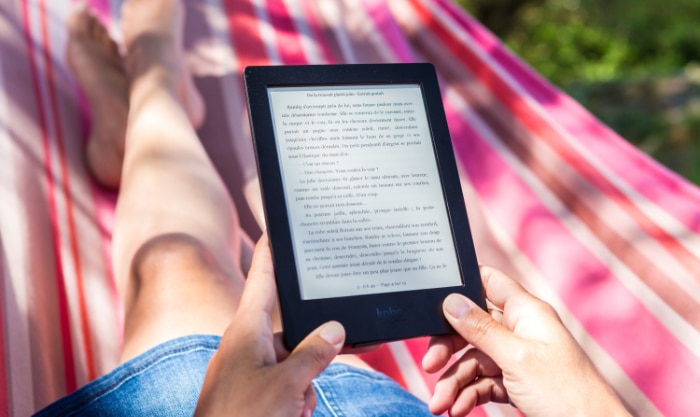
Beyond technical specifications and comfort factors, several practical elements influence which device might better serve your needs. Financial considerations, content availability, and how the device performs in various environments all play significant roles in the overall ownership experience.
Budget and Value
E-readers offer a more accessible entry point for digital reading. Basic models from major brands like Kindle and Kobo start around $75-100, providing the core reading experience without unnecessary frills.
Even premium e-readers with additional features like waterproofing, physical page turn buttons, or larger screens typically max out around $250-300.
The value proposition becomes clearer for dedicated readers who would otherwise purchase multiple physical books. E-books generally cost less than their physical counterparts, with many classics available for free through public domain sources.
For someone reading 20+ books annually, the initial investment can be recouped relatively quickly.
Tablets command significantly higher prices for their versatility. Entry-level options start around $150-200 for basic functionality, while mainstream models from companies like Apple, Samsung, and Microsoft range from $300 to well over $1,000 for premium versions.
The higher cost reflects the additional hardware required to support multiple functions beyond reading.
Long-term costs vary between the platforms as well. E-reader ecosystems primarily involve book purchases, with optional subscription services like Kindle Unlimited ($11.99/month) offering access to large libraries for regular readers.
Tablet ownership often includes ongoing expenses for apps, games, productivity software subscriptions, and digital content across various media types.
Content Compatibility
E-readers prioritize text-based content while offering limited support for other media. Most handle standard e-book formats like EPUB (though Kindle uses a proprietary format), along with PDFs and basic image files.
The devices excel at displaying novels, non-fiction books, and other primarily text-based works.
The limitations become apparent with content containing complex layouts, large images, or interactive elements. Comics and graphic novels often appear compressed or difficult to read on smaller e-ink screens, while textbooks with detailed diagrams may lose clarity.
Additionally, audiobooks require Bluetooth connectivity, a feature not universal across all e-reader models.
Tablets shine in content versatility, handling virtually any digital media format. They support enhanced e-books with embedded video, interactive children's books, complex magazine layouts, and comic books with color preservation.
Productivity documents, spreadsheets, and presentations display as intended, making tablets suitable for both leisure and professional reading.
The app ecosystems available on tablets further expand content options beyond what any e-reader can offer. Various reading apps provide access to multiple book stores and library borrowing services, while specialized apps exist for scientific papers, manga, comics, and professional documents.
Furthermore, audiobooks, podcasts, and video content complement the reading experience on a single device.
Environment Adaptability
E-readers perform exceptionally well outdoors, with e-ink displays remaining perfectly visible even in direct sunlight. The reflective screen technology actually benefits from bright ambient light, similar to a physical book.
Many readers appreciate the ability to read comfortably at beaches, parks, or poolside without struggling to see the screen.
Most modern e-readers include front-lighting systems for night reading, though the illumination tends to be more subtle than tablet screens. The gentler light works well in bedrooms and darker environments without overpowering or causing discomfort.
Tablets struggle significantly in bright outdoor conditions. The glossy screens create glare and reflections that can make reading difficult or impossible in direct sunlight.
Even high-brightness settings may not overcome these limitations, forcing users to seek shade or adjust their position frequently.
Indoor and low-light environments favor tablets due to their bright, adjustable screens. The backlit displays provide ample illumination for reading in any lighting condition, from complete darkness to moderately lit rooms.
The brightness range typically exceeds what e-readers can offer, though at the cost of potentially increased eye strain during extended sessions.
Conclusion
Choosing between an e-reader and a tablet ultimately comes down to balancing your priorities. E-readers excel with their paper-like display, weeks-long battery life, and eye-friendly reading experience, making them perfect for book lovers.
Tablets offer versatility beyond reading with their vibrant screens and multi-purpose functionality, though with trade-offs in battery life and potential eye strain.
Consider what matters most to you. Dedicated readers will likely prefer an e-reader's focused experience, while those needing a device that handles both books and productivity tasks might justify a tablet's higher cost.
Additionally, budget-conscious buyers often find e-readers more economical, especially considering the lower prices of e-books compared to physical copies.
Your reading habits should guide your decision. The right choice isn't about having the most features, but finding the device that best supports how you actually read day after day.

